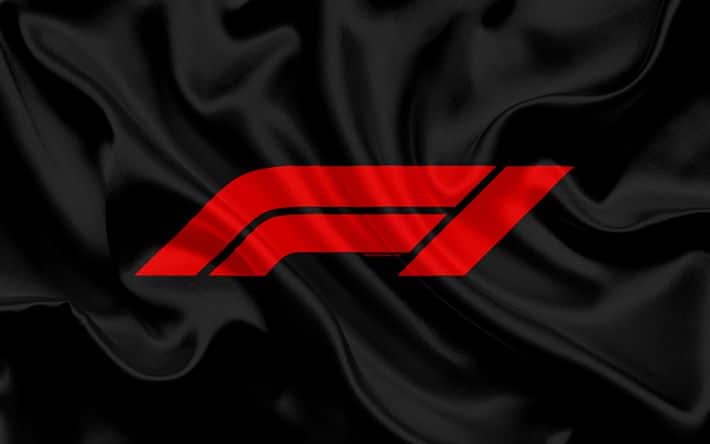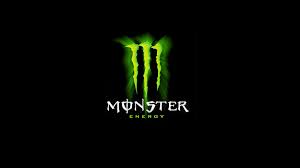Today, Formula One is regarded as one of the best racing events in the world, with the highest budget and the greatest number of fans. This is not just a fun show but also a place where companies can try out their ideas before making them for everyone. Generally, the Formula One World Cup is currently held every year. The racing season is divided into Grand Prix (translated from French as “Big Prize”) stages, held on specially built or public street tracks worldwide. On the other hand, the racing calendar is usually approved a few months before the next championship begins. The racing season runs from the spring to the fall. But this article goes beyond just what happens on the racetracks. Instead, it explains all you should know about the Formula 1 logo, its history, and some of the best branding practices.
Formula 1 Logo: Meaning and History
The history of F-1 championships can be traced back to European championships held during Grand Prix car races in the 1920s and 1930s. However, these races were run without a single authorized regulation or set of established rules. The FIA developed the Formula A rules, later renamed Formula 1. The rules were implemented in 1947, and they held the Grand Prix. As a result, the term “formula” refers to a set of rules that all participants must follow and a set of technical requirements for racing cars. The letter “1” denotes the highest level of competition. The first F-1 races were held in 1948, followed by the first competition with Grand Prix points two years later.
What Exactly is Formula One?
Since 1950, Formula 1 has been the most prestigious and popular class of international car races. The second name of F-1 is “royal races” because the top teams’ budgets can reach hundreds of millions of dollars. No other sport has such expenses.
1985 – 1986
The original Formula 1 logo was quite detailed and included the full name of the races. “FIA World Championship Formula One,” it said. The letters were all uppercase and blue. The phrase “World Championship” was done in two lines with smaller lettering that was the same height as the rest of the letters. On the left was a round emblem with the globe in the center and “F.I.A.” written across it in white with a blue ribbon as the base.
1987 – 2001
This version was much more daring. The new Formula 1 logo featured several lines, with the word “FIA” printed on the top line. It featured a silhouette of a white racing car with black wheels that were positioned so that the horizontal lines in “F” and “A” were replaced. The next three lines read “Formula One,” “World,” and “Championship.” They all used the same font and black color, but the letter size was adjusted so that each word was the same length as the first line. They were divided by two bright yellow lines, which made a big difference and caught the eye right away.
1994 – 2017
The new logo is simpler but no less eye-catching. “F1” is made up of an italicized letter “F” and red speed marks for “1,” with a straight line on the left and spikes for marks that go to the right. Underneath, it said, “Formula 1” in black, italicized letters that were much smaller in size.
2017 – Today
In 2018, Formula 1 introduced a logo that was both striking and intriguing. It was just a red “F1” inscription done in an unusual way. The letter was much wider and taller. It was simply two lines drawn closely together and separated by a thin white line. Because the letter and number were in italics, the whole emblem looked like it was just a small part of a racetrack. The designers wanted to convey the excitement and dynamics of racing.
Formula 1 Logo: Color and font
Formula 1 used bright colors for its logo, with the exception of the first, which was blue. A black, white, and yellow color palette was replaced by a black, red, and white color palette. The most recent Formula 1 logo was red with a hint of white. These are the colors of power, luxury, strength, passion, and energy, all of which are perfectly appropriate for F-1 car races. When it comes to font, it has evolved along with car racing. The letters, on the other hand, were always geometric. Straight lines and corners were beautifully accentuated by smooth curves reminiscent of race tracks.
What is hidden in the Formula 1 logo?
The modern F1 logo was designed in the early 2000s and is still considered one of the most creative logos ever created. However, most F1 fans have never paid enough attention to see what is involved in the design.
Most of you probably think “F” stands for “Formula” and the red design stands for “1”. However, it is not the red-colored design that represents “1,” but rather the white space between the black-colored “F” and the red-colored design.
Who designed the F1 logo?
The logo was designed by Carter Wong, a London-based design firm, and was first used for the 1994 season. It quickly became a recognizable and well-loved icon of the sport.
Interestingly, the ‘1’ in Formula 1 is found in the white area between the red lines on the right rather than on the red lines on the right. Those red lines, or speed marks,’ contributed to the logo’s impression of movement and fury, while the use of black on the ‘F’ gave it a sense of force.
How much does it cost to put a logo on a F1 car?
The amount of money needed to sponsor a Formula One team can range widely depending on the size of your organization and how involved you want it to be. In the case of Formula One sponsorship, smaller companies often pay between $500,000 and $750,000 per year, whereas larger organizations may spend several million dollars annually on this type of marketing.
Formula One’s History
Formula One is the highest level of international racing for open-wheel single-seater formula racing cars sanctioned by the Fédération Internationale de l’Automobile (FIA). Since its inception in 1950, the World Drivers’ Championship, which became the FIA Formula One World Championship in 1981, has been one of the world’s premier forms of racing. The name’s formula refers to the set of rules that all participants’ cars must follow.
A Formula One season consists of a series of Grands Prix held around the world on purpose-built circuits as well as closed public roads.
At Grands Prix, a points system is used to determine two annual World Championships: one for drivers and one for constructors. Each driver must have a valid Super Licence, the FIA’s highest class of racing license. The races must take place on tracks graded “1” (formerly “A”), the highest grade awarded by the FIA.
Formula One cars are the world’s fastest regulated road-course racing cars, thanks to extremely high cornering speeds achieved through the generation of significant amounts of aerodynamic downforce. Much of this downforce is generated by the front and rear wings, which also cause severe turbulence behind each car. Turbulence reduces the downforce generated by a car directly behind, making overtaking difficult.
Read Also: BMW LOGO: Meaning, History, Evolution, Best Easy Tips
The cars have undergone significant changes for the 2023 season, including increased use of ground effect aerodynamics and modified wings to reduce turbulence behind the cars, with the goal of making overtaking easier.
The cars rely on electronics, aerodynamics, suspension, and tires. Traction control, launch control, automatic shifting, and other electronic driving aids were banned for the first time in 1994. They were briefly reintroduced in 2001 before being banned in 2004 and 2008, respectively.
The average annual cost of running a team is around $265 million, and its financial and political battles are widely publicized. On January 23, 2017, private equity firm CVC Capital Partners sold the Formula One Group to Liberty Media for $8 billion.
Formula 1 Evolution
The Formula One series evolved from the European Grand Prix motor racing championships of the 1920s and 1930s. The formula is a set of rules that all cars in the competition must follow. Formula One was a new formula that was agreed upon in 1946, with the first non-championship races held that year. The 1946 Turin Grand Prix was the first Formula One race.
Before World War II, a number of Grand Prix racing organizations established rules for a world championship, but due to the suspension of racing during the conflict, the World Drivers’ Championship did not become formalized until 1947. In 1950, the first world championship race was held at Silverstone in the United Kingdom. In 1950, Giuseppe Farina won the first World Championship for Drivers in his Alfa Romeo, narrowly defeating teammate Juan Manuel Fangio.
Fangio, on the other hand, won the title in 1951, 1954, 1955, 1956, and 1957. (his record of five World Championship titles stood for 45 years until Michael Schumacher took his sixth title in 2003). Fangio’s streak was broken (after an injury) by Ferrari’s two-time champion Alberto Ascari.
Juan Manuel Fangio’s Alfa Romeo 159, winner of the 1951 World Championship.
In 1958, a constructors’ championship was established. Although the United Kingdom’s Stirling Moss was able to compete on a regular basis, he was never able to win the world championship and has been dubbed “the greatest driver to never win the world championship” by The Independent.
Read Also: YOUTUBE LOGO: How Was Youtube Started?
During a seven-year period between 1955 and 1961, Moss finished as runner-up four times and third three times. Fangio, on the other hand, set a record by winning 24 of the 52 races he entered, a record that stands to this day. In the 1960s and 1970s, South Africa and the United Kingdom had national championships. For many years, promoters held non-championship Formula One races. However, due to rising competition costs, the last of these occurred in 1983.
During this time, teams were managed by Alfa Romeo, Ferrari, Mercedes-Benz, and Maserati. The first seasons featured pre-war vehicles such as Alfa Romeo’s 158. They were front-engined vehicles with narrow tires and either 1.5-liter supercharged or 4.5-liter naturally aspirated engines. Due to a scarcity of Formula One cars, the 1952 and 1953 World Championships were held under Formula Two rules, which called for smaller, less powerful cars.
When the world championship for Formula One was brought back in 1954 with a new rule that engines could only be 2.5 liters, Mercedes-Benz made the advanced W196. Desmodromic valves and fuel injection, as well as enclosed and streamlined bodywork, were among the innovations. Mercedes drivers won the championship for two years before pulling out of all motorsport following the 1955 Le Man disaster.
Mike Hawthorn and Van Wall’s championship victories in 1958 ushered in an era of British dominance, despite the fact that Stirling Moss had been at the forefront of the sport without ever winning the world title. Between 1958 and 1974, British drivers won nine Drivers’ Championships, and British teams won fourteen Constructors’ Championships between Hawthorn, Jim Clark, Jackie Stewart, John Surtees, and Graham Hill.
Technological Advancements
The Type 251, which brought mid-engined cars back to the market (after Ferdinand Porsche’s groundbreaking Auto Unions of the 1930s), was the first big step forward in technology. The Australian Jack Brabham, who won the world championship in 1959, 1960, and 1966, showed right away that the mid-engined design was better. All regular competitors had switched to mid-engined cars by 1961. The Ferguson P99, a four-wheel drive design, was the final front-engined Formula One car to compete in a world championship race. It competed in the 1961 British Grand Prix as the only front-engined car that year.
In 1962, Lotus made its first car with a monocoque chassis made of a single sheet of aluminum instead of the usual space-frame design. This turned out to be the most important technological advance since cars with engines were introduced. Team Gunston was the first to run cigarette sponsorship on their Brabham cars, which were privately entered in orange, brown, and gold colors in the 1968 South African Grand Prix on January 1, 1968, thus introducing sponsorship to the sport.
Read Also: NEW YORK TIMES LOGO: Why Is The New York Times called the Gray Lady
Five months later, Lotus, the first working team, followed suit by painting their cars in an Imperial Tobacco livery for the 1968 Spanish Grand Prix.
When aerofoils were first used in the late 1960s, aerodynamic downforce slowly became more important in car design. In 1970, Jim Hall’s Chaparral 2J was the first car to use ground-effect aerodynamics. This gave the car a huge amount of downforce and increased cornering speeds by a lot.
The aerodynamic forces pressing the cars to the track could be up to five times the weight of the car. As a result, extremely stiff springs were required to maintain a constant ride height, effectively rendering the suspension solid. This meant that the drivers were completely reliant on the tires for any minor cushioning of the car and driver from road surface irregularities.
Big Company
Bernie Ecclestone reorganized the management of Formula One’s commercial rights beginning in the 1970s; he is widely credited with transforming the sport into the multibillion-dollar business it is today.
Ecclestone joined the Formula One Constructors’ Association after purchasing the Brabham team in 1971, and he became its president in 1978. Before Ecclestone, the circuit owners controlled the income of the teams and negotiated with each one separately. Now, through FOCA, Ecclestone has convinced the teams to “hunt as a pack.” He gave Formula One to track owners as a package they could choose to take or not take. Almost all that was required in exchange for the package was the surrender of trackside advertising.
The formation of the Fédération Internationale du Sport Automobile (FISA) in 1979 triggered the FISA-FOCA war, in which FISA and its president, Jean-Marie Balestre, fought FOCA over television revenues and technical regulations.
According to the Guardian, Ecclestone and Max Mosley “used [FOCA] to wage a guerrilla war with a very long-term goal in mind.” FOCA threatened to launch a rival series, boycotted a Grand Prix, and FISA withdrew race sanction.
Read Also: NISSAN LOGO: Why Did Nissan Change Its Logo (Invaluable 2022 Tips)
As a result, the 1981 Concorde Agreement ensured technical stability by requiring teams to be given reasonable notice of new regulations. Although FISA asserted its right to TV revenues, it delegated management of those rights to FOCA.
In 1983, FISA prohibited ground-effect aerodynamics.
But turbocharged engines, which Renault was the first to make in 1977, made more than 520 kW (700 bhp) and were needed to compete. In qualifying for the 1986 Italian Grand Prix, a BMW turbocharged engine achieved a flash reading of 5.5 bars (80 psi), estimated to be over 970 kW (1,300 bhp). Power in race trim reached around 820 kW (1,100 bhp) the following year, with boost pressure limited to only 4.0 bar.
These vehicles were the most powerful open-wheel circuit racing vehicles ever built. Before turbocharged engines were banned entirely in 1989, the FIA put limits on how much fuel could fit in a tank in 1984 and how much boost pressure could be used in 1988.
Electronic driver’s aids were first developed in the 1980s. Lotus started working on an active suspension system, which first appeared on the Lotus 92 in 1983. This system was perfected in 1987 when Ayrton Senna won the Monaco Grand Prix. Early in the 1990s, other teams quickly caught up, and semi-automatic gearboxes and traction control were a natural next step. Due to complaints that technology was determining race results more than driver skill, the FIA banned many such aids for the 1994 season. Because of this, cars that used to be controlled by electronics became very “twitchy” and hard to drive. According to observers, the ban on driver-aids was only in name because they “proved difficult to police effectively.”
A second Concorde Agreement was signed in 1992, followed by a third in 1997.
Related Articles
- NASCAR LOGO: Nascar Race Car History & Specifications
- RACIAL SENSITIVITY TRAINING: Best Strategies to Promote Diversity and Inclusion
- ALFA ROMEO LOGO: Why People Love Alfa Romeos
- Tiger Woods Net Worth: How Much is He Worth in 2022
- PAY EQUITY: Importance of Pay Equity Policy






